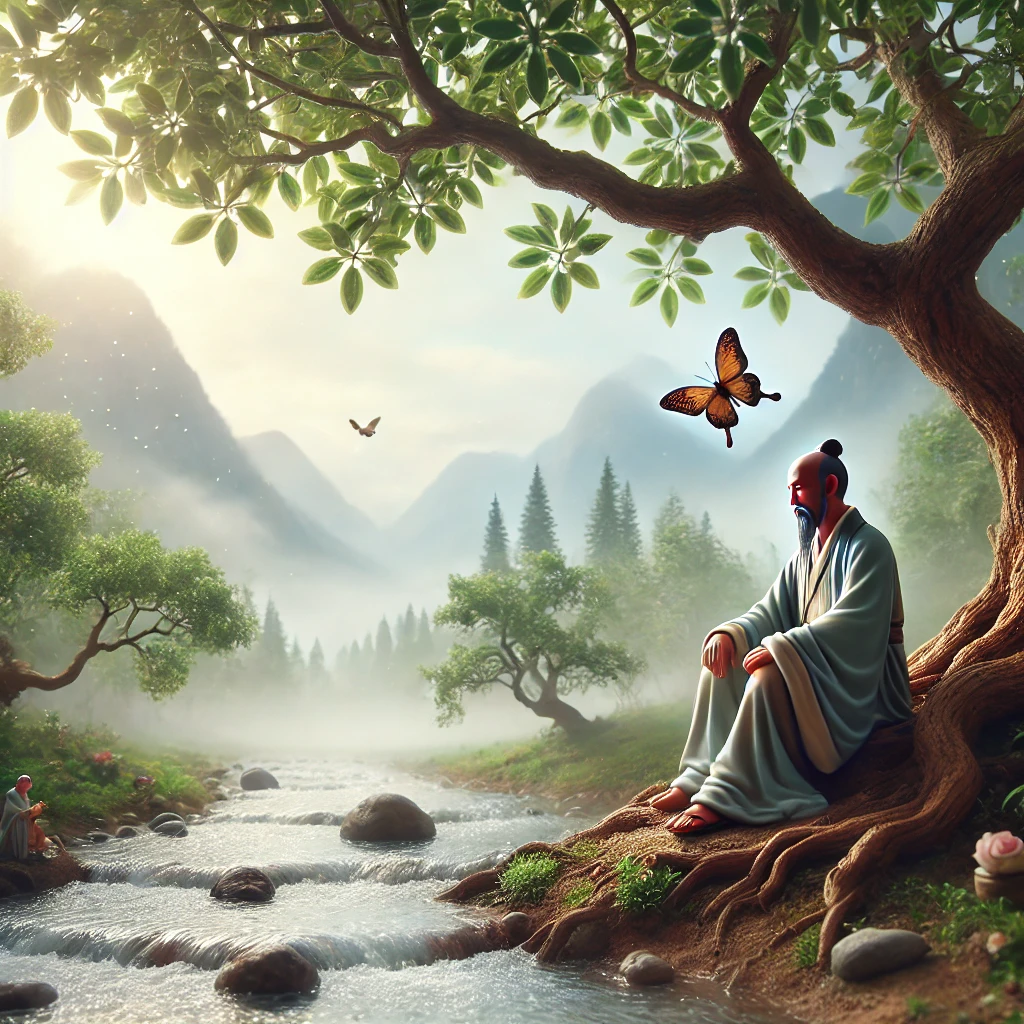The Zhuangzi Philosophy
The way of the Tao as an answer to Confucianism

In Zhuangzi's thought, Taoism embodies a philosophy of harmony with nature and acceptance of change as opposed to Confucian social rigidity. Zhuangzi calls for breaking free from social patterns to rediscover the true essence of existence, reconnecting with nature and embracing the ceaseless flow of life - Image generated with AI
Taoist thought, as reflected in Zhuangzi's writings, is undoubtedly one of the most fascinating philosophical currents in ancient China. It embodies an approach that contrasts starkly with Confucian pragmatism and hierarchy.
Zhuangzi, born in the troubled Warring States period (5th-6th century B.C.), was a Chinese philosopher and thinker, a time of conflict and turmoil for China. In contrast to Confucius, who considered social and institutional hierarchies to be a fundamental part of human existence, Zhuangzi sought freedom in the interiority of human beings and their relationship with nature rather than in the social order. He believed that the rigid patterns of Confucianism were an attempt to turn ‘raw wood into tools’, that is, a forced imposition on the authentic nature of things. Zhuangzi was clear on the idea that knowledge should not make the individual a slave to the imposed social order, but should rather help him explore himself and understand his own inner self. The Tao represents the changing and genuine essence of nature, it is neither a divine entity nor a moral principle, but rather an ever-changing flux, a flow of things and events that man must learn to embrace and respect, embracing natural changes without opposing them. According to Taoism, this is the key to true harmony.
Zhuangzi stated that the path to inner peace is through awareness of the eternal alternation of things that change and move; these changes must be embraced with serene contemplation. Taoism can also be defined as a game of opposites, in which life and death, good and evil, an infinite series of opposites alternate endlessly, hence its black and white symbol in a circular and easily recognisable form. This conception, for the 6th century BC, was extraordinary and of rare power. Today, Taoism continues to inspire, proposing a worldview that celebrates plurality and change in the world without the need to subject it to force or violent change.
Ames, R. T. , Seidel, . Anna K. and Strickmann, . Michel. "Taoism." Encyclopedia Britannica, October 28, 2024.
Hansen, Chad, "Zhuangzi", The Stanford Encyclopedia of Philosophy, Edward N. Zalta & Uri Nodelman, 2024.
Ziporyn, Brook, ed. Zhuangzi: The Essential Writings with Selections from Traditional Commentaries. Indianapolis: Hackett Publishing Company, 2009.
2025-09-24
Francesco Toniatti
